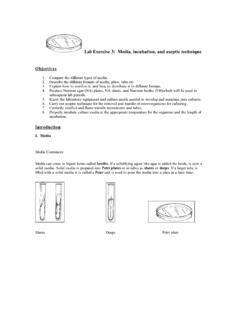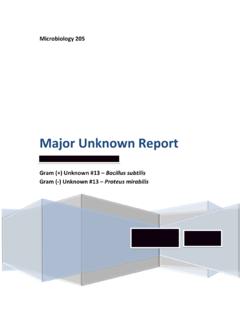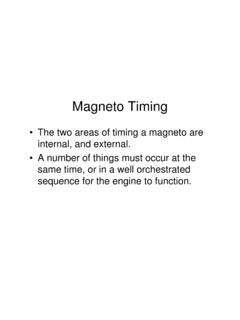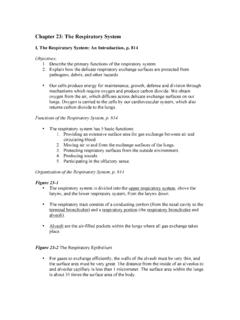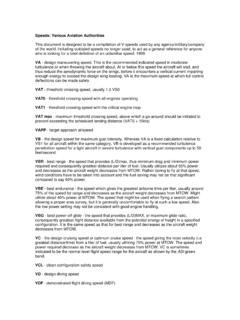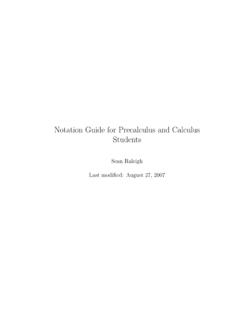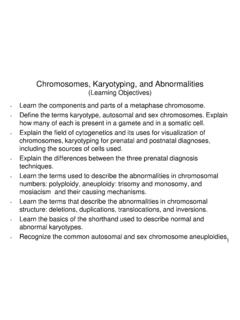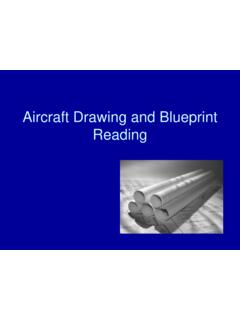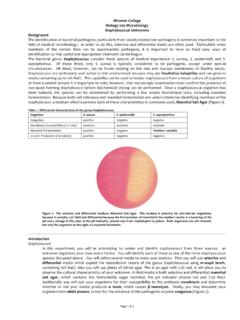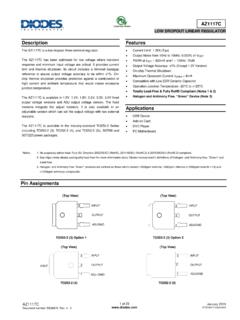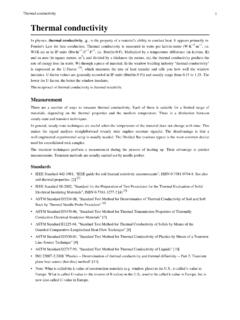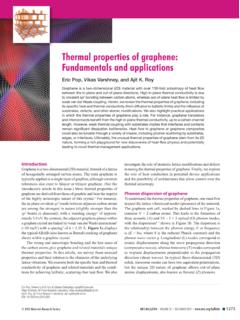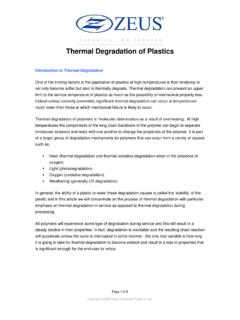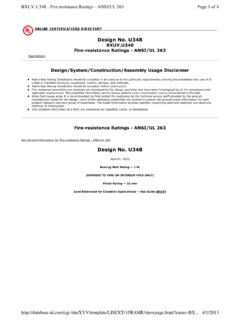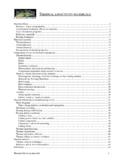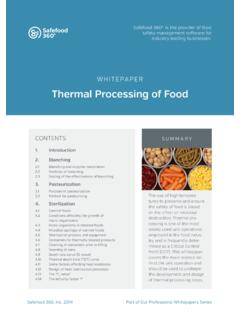Transcription of Inductance, capacitance and resistance
1 Inductance, capacitance and resistance As previously discussed inductors and capacitors create loads on a circuit. This is called reactance. It varies depending on current and frequency. At no frequency, or DC there is no reactance. At low frequency capacitors create the most reactance At high frequency inductors create the most reactanceInductance, capacitance and resistance Since inductive reactance varies with frequency and inductance the formula for this is Xl=2 fL where fis frequency and L is Henrys and Xlis in Ohms. Ohms law for inductance is the same as that used to combine resistances in series and parallel circuits.
2 An inductor will cause current to lag behind voltage because induced voltage resists current , capacitance and resistance Since capacitive reactance varies with frequency and capacitance the formula for this is Xc=1/(2 fC) where fis frequency and C is Farads and Xcis in Ohms. Ohms law for capacitance is inverted from that used to combine resistances in series and parallel circuits. A capacitor will cause voltage to lag behind current because at 0 volts charge the circuit will be at maximum , capacitance and resistance Therefore capacitive and inductive reactance counter, or cancel each other. Their effect on phase counters the other s phase effect.
3 ELI the ICEman E leads I with an L (inductor) I leads E with a C (capacitor)Inductance, capacitance and resistance Since resistance doesn t effect phase the net of the two reactances, with the lessorsubtracted from the greater, will act upon total impedance at 90 to resistance . But since reactance is already expressed in the form of Ohms in a purely reactive circuit Ohms laws applies normally for a purely inductive or capacitive , capacitance and resistance Since both reactance s cause current to lead or lag by 90 they must be added to resistances using the Pythagorean theorem. C2= A2+ B2 Zt2= R2+ X(c-l or l-c)2 Zt= the circuits total opposition to current flow.
4 If the circuit has no AC, or inductors and capacitors then Zt= RtInductance, capacitance and resistance Ohms law works for AC circuits with inductors, capacitors and resistances. Series circuits solve for impedance first, in parallel solve for currents since the V-drop is the same across each leg. Inductance, capacitance and resistance Resonance is when the frequency is such that a capacitor in series with an inductor cancel each other s reactance. Similar resonance in a parallel circuit with an inductor and capacitor will have infinite resistance at a resonant , capacitance and resistance Power factor is 100% in DC circuits.
5 It is the ratio of apparent power to true , capacitance and resistance Apparent Power is that derived from measuring voltage and current in an AC circuit and multiplying them. True power is the power actually used by the resistive load and does not contain the power lost to reactance. Power factor = 100 X True Power / Apparent PowerInductance, capacitance and resistance110V 400hz270 300 f31mHXl= 2 fLXc= 1/(2 fC)Rt= RZ2= Rt2+ (Xc-Xl)2It = E/ZInductance, capacitance and resistance110V 400htz270 300 f31mHXl= 2 fLXc= 1/(2 fC)Rt= RIt = E/ZZ = R Xl Xc/v(Xl2 Xc2+(R Xl-R Xc)2)Transformers A transformer is a set of two or more inductors in close proximity whose purpose is to exchange voltage for current in an AC circuit.
6 If the voltage or current is incorrect for a given application it can be transformed up or down. The catch is if one goes up, the other must go down. The other catch is this will lose some power within the Essentially one inductive coil will have thicker wire with fewer loops or turns than the other. They can be high current or high voltage coils depending on what they need for Generally a step up or step down transformer refers to the voltage being stepped . The unit can include a rectifier to convert the output to DC. It can have multiple coils tapped into at various points internally for a series of different outputs from one They can be cooled, often in an oil bath.
7 They are limited by the apparent power being driven through them. Excessive power input or output can overheat them. They can have different cores from iron to They can fully isolate one part of a circuit from another such that electrons do not actually travel through the transformer. or they can be wired such that the circuit is not isolated. They are very efficient, loosing a little power to heat and hysterisis. But they are inductors so will effect the impedance of the AC Transformers will cause the voltage of an AC circuit to be 180 out of phase between the primary and secondary windings. This is because the current is 90 out of phase with the primary voltage and the secondary voltage is 90 out of phase with that current.
8 Consequently a circuit with multiple transformers must be designed to accommodate phase Another neat feature of transformers is that they use almost no power when idling in an AC circuit. In other words when there is no load on the secondary circuit the counter EMF in the primary cancels out almost all current flow in that They can be single dual or three phase. Each winding will need a reciprocal Their cores will be laminated to reduce eddy current effects. And they can have a core that moves into and out of the coil. This makes it an adjustable transformer which can be used to tune a circuit. Capacitors can also be made variable for the same Motors are electronic devices.
9 If it operates by internal combustion it is properly called an engine. Like a generator, the relationship of motion, current flow and direction of the magnetic lines of flux will determine what an electric motor will Since the left hand rule for generators defines current flow based upon motion direction a reverse rule, the right hand rule for motors defines the motion direction based upon current flow. Each respective finger remains the same with the index finger defining the lines of flux from north to south, the thumb defines the motion force, and the middle finger points to the direction of current This is because of the original left hand rule which describes the behavior of flux around a current carrying conductor.
10 In this case the lines of force below the conductor are in the same direction and repel, while the lines above are opposite and Since this force applied will vary depending on the direction the conductor travels, and since the direction varies since the conductor is on a rotating armature it would eventually hit neutral force and then begin to reverse force. So, more than one conductor is used, there is a switching commutator, and the armature has a lot of mass to ensure momentum. MotorsMotors In some strategies they have more than one brush assembly riding on the commutator. This allows more than one set of conductors to apply torque at the same time, but it will also require a second set of field poles.
